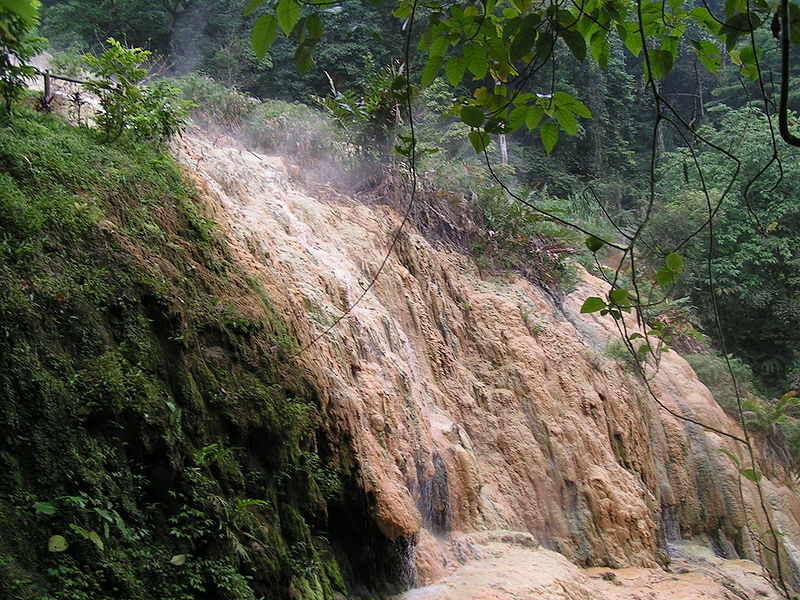Epithermal gold deposits are typically found in a near surface environment where the gold and other metals are deposited usually within 1.5 km from the surface. This type of deposit is always associated with volcanism either of the surface of the earth or in spreading centers at the bottom of the sea where their physical manifestation is hot springs
 |
| This is the type of mineral deposits that can be laid down by a hot spring. |
An area where a epithermal deposits are common and is in the caldera of Yellowstone National Park where various mineral deposits are being deposited to this day due to the action of geysers, hot Springs and other geothermal events. This can be observed in the deposits of sinter that builds up around the geysers and hot springs Yellowstone park itself is in a giant caldera that was caused by an eruption that occurred about 640,000 years ago. The hot spring activity that is associated with the park is caused from a magma chamber that is relatively close to the surface.
A prospector I know is working in volcanic terrain where the last eruption was 3 million years ago where the erosion rate is ~1 mm/year indicating that about 3 km of rock has eroded from the site since it had its last eruption. In this terrain that is located within an ancient caldera enough of the surface rock has eroded away so that most if not all the epithermal deposits that were present, but around the periphery of the caldera one is more apt to discover epithermal deposits of gold and other metals then inside the caldera itself.
 |
| This is gold deposited on barite a common association in epithermal deposits. Photo by Rob Lavinsky |
This does not mean that gold deposits can’t be present in such an environment it just means that they are not likely to be epithermal deposits. Although epithermal deposits are precluded by the depth of erosion it does not preclude other types of other hydrothermal deposits. Since epithermal deposits occur within a low-temperature environment that occurs less than 1.5 km below the surface it stands to reason that if there are still hot springs
Epithermal deposits occur in three different phases depending upon how much sulfur is present in the epithermal water. Deposits of this nature are classified as high sulfidation, intermediate sulfidation and low sulfidation each of these types of deposits are identified by their alteration mineral assemblages, occurrence, texture and in some cases are even identified by the associated element. Pyrite is the most common of these minerals, but you can also find mercury, antimony, arsenic and tellurium. Included in this suite it is also possible to find the base metals copper, lead and zinc as well as gold and silver. Gold and silver may be alloyed together as the alloy electrum.

Bullion Exchanges is a well known Bullion Retailer located in the heart of New York City's Diamond District.
ReplyDeleteBullion Exchanges have a massive variety of products including, metals that range from the ever popular gold & silver to platinum & palladium.
They are offering a massive range of products appealing to 1st time investors and for experienced collectors.